The Sour Beers of Cantillon Brewery
Foreword: A couple of years ago I was lucky enough to take a tour around Cantillon Brewery in Brussels. I wrote it up at the time and it seems a shame not to post it here now. I’m sure the brewery is the same now as it was a couple of years ago. A large part of their process hasn’t changed for decades. If you do ever get the chance to visit the brewery then I strongly encourage it, it’s one of those beer experiences that sticks with you for a lifetime.
The Cantillon Brewery in Brussels is one unlike any other you will find in the world and makes beer in the same way it was made when the brewery was first opened nearly a century ago. Just last week I was lucky enough to take a walk around the brewery to see for myself just what goes into making one the world’s most unique beer styles, Lambic.
The average beer doesn’t take long to make usually somewhere in the region of 3-4 weeks depending on the style. Like most businesses, breweries want to get their products out the door as soon as possible without having a detrimental effect on the quality. The sour beers like those made at the Cantillon Brewery however take up to 3 years to reach the drinker and this is all to do with the process of how it’s made.
What Is A Sour Beer
The first thing the lady who greeted me at the brewery told me was when you taste Cantillon beers forget everything you know about beer. This sums up what a sour beer is like, I expect this is a response to tourists expecting a malty, sweeter beer like most others they’ve experienced.
Sour beers like those made by Cantillon are fermented spontaneously using wild yeast. Unlike most breweries who keep their beer in absolutely clean and sanitised conditions sour beers like lambic are allowed to sit in shallow trays in the brewery with shuttered windows to allow the air to bring in wild yeast and ferment the beer of their own accord.
There are numerous varieties of wild yeast and they ferment out more of the sugars present in the wort than traditional brewers yeast, so rather than having a residual sweetness like most ales and lagers the beer has hardly any remaining sugar so tastes sour.
Cantillon makes Lambic, Geuze and Kriek
Lambic is the beer as described above, spontaneously fermented and usually 3 years old.
Geuze made by Cantillon is a blend of 1, 2 and 3 year old Lambic selected by the brewer and as described by the brewery “the young beer supplies natural sugars for fermentation in the bottle (carbonate), old beer contributes to the bouquet and fine taste”
Kriek is made by adding fruit such as Cherries, Raspberries or Grapes to Lambic. Cantillon make kriek by adding around 150kg of fruit to 500 litres of two year old Lambic. The fruit is left in the beer for 3 months and then bottled with an addition of a one year old Lambic to provide extra sugar to carbonate the bottles.
A Look At How Sour Beers Are Made
When you read about the brewing of sour beers that use wild yeast to start spontaneous fermentation you may build up a picture in your mind of farmhouse style breweries in the middle of open countryside. When you arrive at Cantillon however what you see is a busy, bustling city and not necessarily the grand historic part that Brussels is famous for. Opening the door and stepping inside however you are quickly transported into a setting similar to what you imagine a 19th century brewery to be like (with a few exceptions).
The staff at the brewery allow you to do a self guided tour with a book of information that relates to each part of the brewery so you can take as much time as you want. At the time I visited they weren’t brewing and explained that all the brewing was done between November and March whilst the temperature in the brewery was most suited to their brewing process. However below is a look at the brew plant which in itself is pretty spectacular.
Walking down a long corridor you arrive in the “Mashing House” which as the name suggests houses the mash tun and its pretty impressive propeller for mixing the grain and mash liquor together.
After the mash and sparge 10,000 litres of wort are collected and boiled in both coppers with the hops for 3-4 hours evaporating 2,500 litres. I presume the lengthy boiling duration is to concentrate the wort and create a higher gravity beer, plus any caramelisation that occurs will enhance the flavour of the beer.
From what I’ve read I understand aged hops are used in the beer which are about 3 years old meaning their bitterness will be reduced significantly. A large amount of hops are used in comparison to the brew length in order to extract tannins which act as a preservative in the beer. If fresh hops were used the beer would be too bitter
In this picture is the grain mill which like most of the machinery that I saw in the brewery is run by belts.
The cool ship in the brewery is a vitally important piece of equipment that’s rare to see in most breweries throughout the world. The purpose of the cool ship is to chill the beer down from boiling to 18-20°C by having the maximum surface of beer exposed to the air. This is done overnight which is the reason for brewing only between October and April when the temperature is low enough to cool the beer sufficiently. Depending on the conditions shutters either side of the cool ship are opened and closed to allow air to pass over the beer and bring in wild yeast and bacteria to ferment the beer. At the point the beer is cool enough it will have been inoculated with these wild yeasts and is then moved to a tank ready to be racked into oak or chestnut barrels.
Another thing that isn’t the norm in a modern brewery is a barrel store. Formerly it was the only way to store and move beer but the barrel has now been replaced by stainless steel. In Cantillon Brewery barrels are between 500 and 225 litres, filled from the cooling tank and left open until fermentation has begun. The fermentation starts after a few days and is violent enough that around 5-10 litres of beer per barrel is lost in krausen erupting out of the bung hole.
After 3-4 weeks the barrels are sealed and fermentation continues for 3 years in which another 20% of the beer is lost through the barrel.
This is where Lambic is turned into Geuze. Lambic is uncarbonated but Geuze blends Lambics of different ages, between 1 and 3 years and is bottled allowing the younger lambic to ferment in the bottle to provide carbonation. It’s down to the brewer to select the Lambic to be blended and around 10 barrels are tested to blend one Geuze.
The Lambic is pumped into tanks and dead yeast cells are removed using a cellulose filter and blended in tanks on the other side.
The bottling part of the brewery is where the modern age has taken over. There is a bottling line that can fill 1,200 Champagne bottle an hour and sealed with both corks and crown caps to avoid pressure inside the bottle pushing the cork out.
The bottles are stored horizontally for several months (at least 6) whilst secondary fermentation occurs carbonating the beer. The cellars are particularly impressive with around 60,000 bottles stored at any one time.

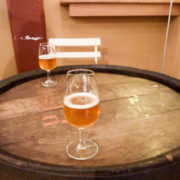
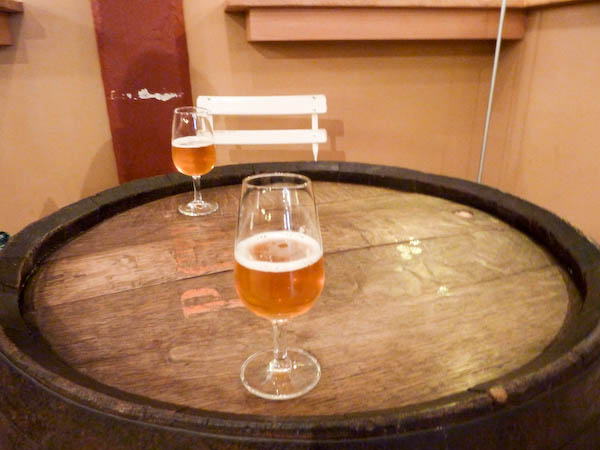

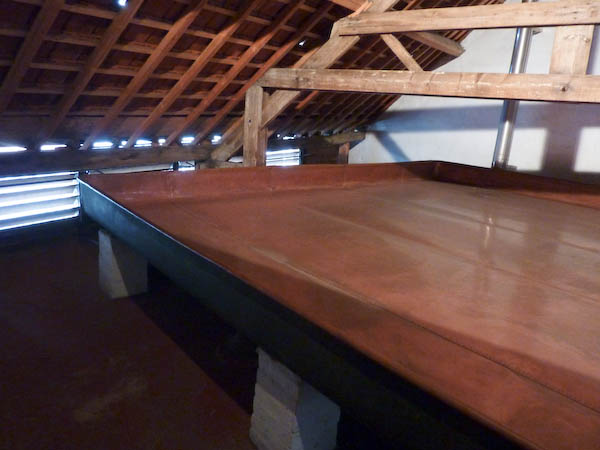
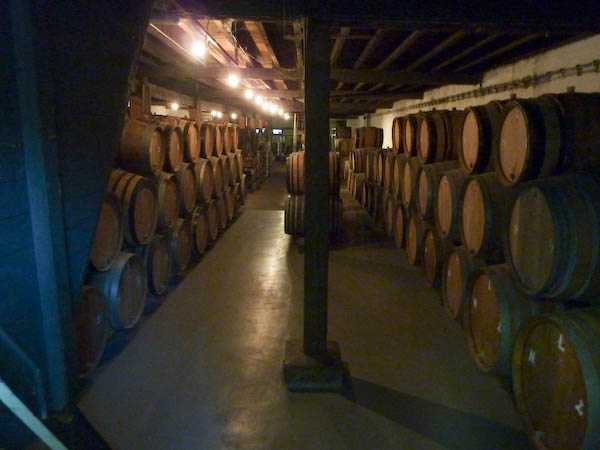
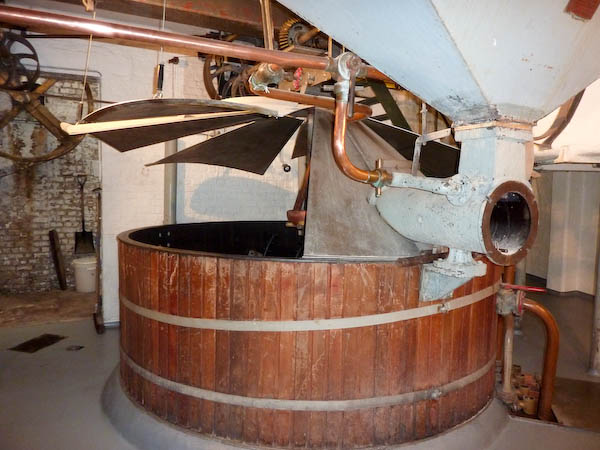
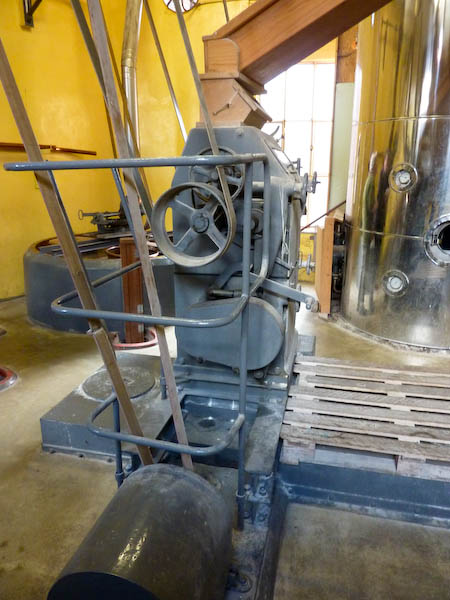
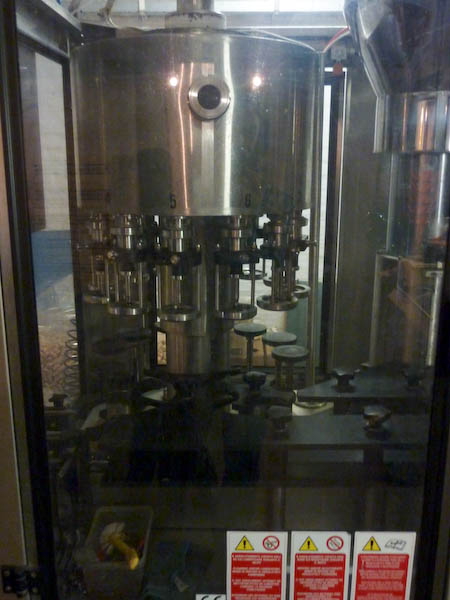



Leave a Reply
Want to join the discussion?Feel free to contribute!